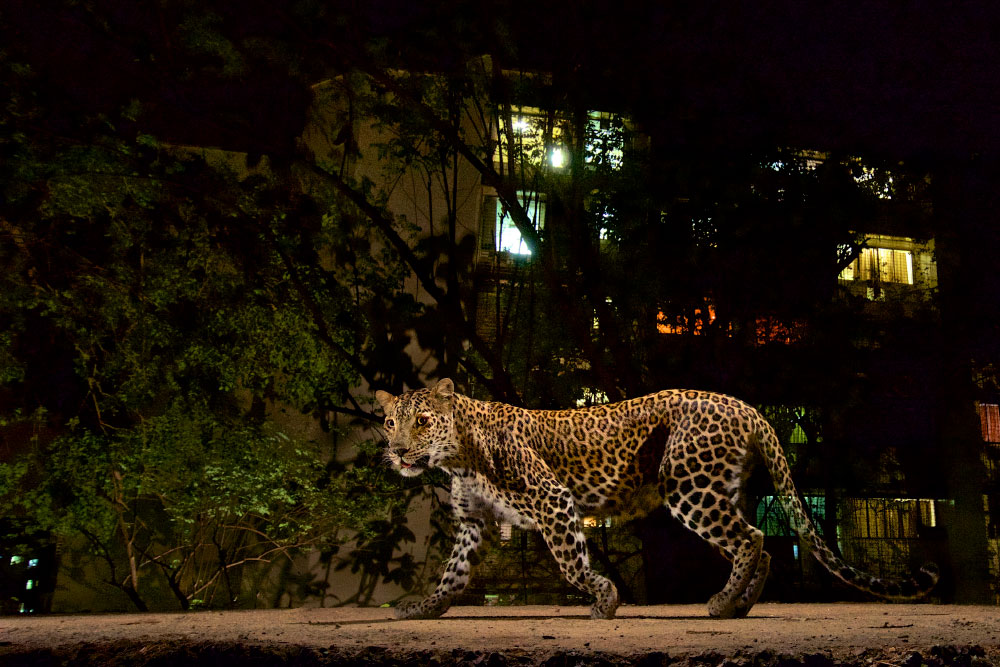
Mass media plays an important role in shaping public perception of human-wildlife interactions. In India, sensational and horrific imagery is often used to portray encounters between the two, even though most of them are neutral.
Media reports on human-leopard interactions are usually focussed on either attacks on people by leopards, or leopards being killed by people. The area in and around Sanjay Gandhi National Park in Mumbai, India, is a leopard hotspot, and witnessed many leopard attacks on people in the past.
Quite naturally, this sparked a high level of media interest and often led to negative perceptions of leopards.
To counter this, the park administration, in collaboration with biologists, citizen groups and press clubs, proactively engaged with the media to hold a series of workshops for local reporters starting in 2011. This was part of an initiative aimed at putting human-leopard conflicts in their correct perspective. The workshops essentially provided the most recent knowledge about leopards, and their interactions with people (see video).
To evaluate whether these sensitisation workshops had any effect on the quality of reportage in the period following the workshops, our research team analysed the news headlines of two important English newspapers, identifying the tone, content, and characterizations of leopards and human-leopard interactions in the Mumbai area. We used Qualitative Content Analysis (QCA) to analyse headlines to assess the impact of media workshops on the reporting of human-leopard interactions in Mumbai. Analyzing headlines is faster and cheaper than reviewing entire articles, and allows for a smaller team of conservationists to understand the effects of media across a large region.
Interestingly, the results found that the reporting of leopard incidences increased after the workshops, even though there were fewer leopard attacks on people. However, the media coverage was less sensational, and, instead of ascribing blame, realistic solutions were presented. The reportage also provided more detail on the setting and context of leopard attacks. There was a decrease in leopards being portrayed as the aggressor. Rather, the welfare of leopards was considered more often. The headlines increasingly portrayed leopards to be behaving either naturally or having been victims of either human aggression or an extenuating circumstance. More emphasis was placed on how humans can prevent attacks.
Thus, there is good evidence that proactive engagement of expert biologists and the Forest Department with the media positively influenced the way human-leopard interactions were reported. This led to informed reportage rather than mere sensationalism. In addition, the team demonstrated that QCA can be used relatively quickly, and with few resources, to evaluate the effectiveness of media interventions.
The study, which was recently published in the Journal of Urban Ecology (2017, 1-7), titled ‘From fear to understanding: changes in media representations of leopard incidences after media awareness workshops in Mumbai, India’, is authored by a team of researchers and managers from the Center of Leadership in Global Sustainability, Virginia Polytechnic Institute and State University in Virginia (Ryan Hathaway, Ana-Elisa Bryant, and Megan Draheim), the Wildlife Conservation Society – India (Prerna Vinod and Vidya Athreya), in collaboration with the Maharashtra Forest Department (Sunil Limaye).

 CI is a non-profit, non-commercial portal that aims to facilitate wildlife and nature conservation by providing reliable information and the tools needed to campaign effectively.
CI is a non-profit, non-commercial portal that aims to facilitate wildlife and nature conservation by providing reliable information and the tools needed to campaign effectively.